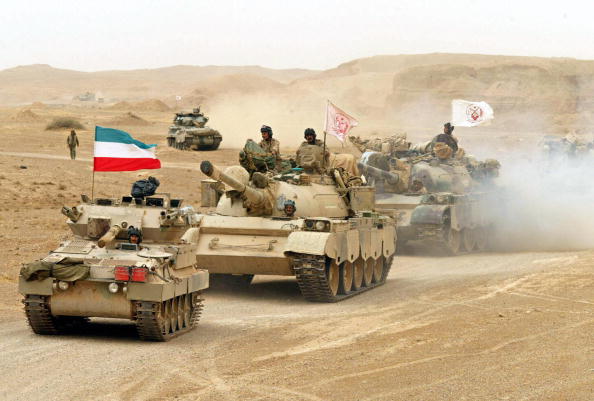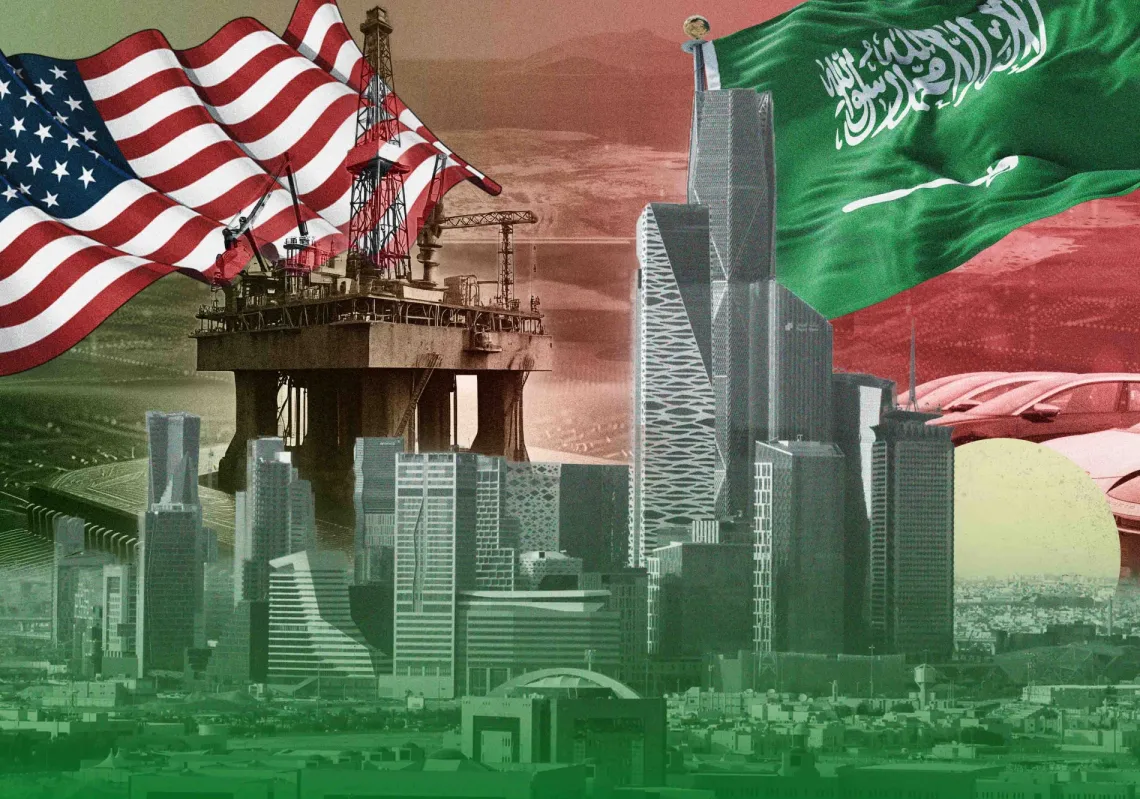Al Qaeda’s focus is partly the product of circumstance. Interstate competition is increasing across the Middle East. The U.S.-Iranian conflict has heated up under U.S. President Donald Trump, as has the rivalry between Iran and Saudi Arabia, with both countries courting client states, engaging in proxy wars, and routinely threatening escalation. The competition between Iran and Israel perpetually risks blowing up, both figuratively and literally.
And Iran is not the only focus of regional interstate conflict. In June 2017, Saudi Arabia, along with Bahrain, Egypt, and the United Arab Emirates (UAE), severed relations with Qatar and placed it under a land, sea, and air blockade. The spat appears to be a product of long-simmering tensions between Qatar and the Saudi-led bloc over Doha’s sponsorship of Islamist political parties and rebel groups during and after the Arab Spring.
These rivalries have roiled politics throughout the Middle East, fueling proxy wars from Libya to Syria to Yemen that al Qaeda has been able to exploit. But the group’s renewed focus on interstate conflict reflects more than opportunism. For years, al Qaeda has cultivated strategic alliances with a range of state actors, some of them ideologically hostile to it. For a time, it looked as though this strategy might backfire, with the rise of the more ideologically strident Islamic State (ISIS). Yet al Qaeda has defied predictions that ISIS would break up its transnational network or steal away its major affiliates. Now, with its wealth of experience and web of historical relationships with regional powers, al Qaeda looks poised to capitalize on the chaos engulfing the Middle East.
FRIENDS IN HIGH PLACES
From its inception, al Qaeda has been keenly aware of its ability to exploit interstate conflict. Founded in the dying days of the Afghan-Soviet war, the group never received direct state backing. Indirectly, however, al Qaeda benefited from U.S. and Pakistani support for the anti-Soviet mujahideen: it was able to grow, recruit, and find sponsors by identifying with the heroic anti-Soviet cause. Since the 1990s, al Qaeda has also cultivated a relationship with Iran. This relationship has often been tense, involving not only state support and sanctuary but occasional arrests and kidnappings, some of which have been resolved through prisoner exchanges. Despite the significant differences between the region’s only Shiite theocracy and an international Sunni jihadist group, Iran has maintained on-again, off-again support for al Qaeda.
In an early example of such support, Hezbollah, the Iranian-backed Lebanese militant group, helped train the al Qaeda operatives who carried out the 1998 bombings of the U.S. embassies in Nairobi and Dar es Salaam, which together killed 223 people. Since 9/11, dozens of major al Qaedaoperatives, including Osama bin Laden’s sons Hamza and Saad, have found themselves in the Islamic Republic, where they have alternatively been offered safe haven and placed under house arrest. Saif al-Adl, an Egyptian explosives expert who has long been considered a potential future leader of al Qaeda, has also spent considerable time in Iran as both a refugee and a prisoner, producing major strategic writings while in the country.
Following the U.S. invasion of Iraq in 2003, the Iranian regime supported a variety of Iraqi militant groups in order to sabotage Washington’s war effort. Tehran’s most natural allies were Shiite militants, but it also aided al Qaeda’s local affiliate, al Qaeda in Iraq (AQI). This relationship backfired in important ways: in 2004, AQI’s leader, Abu Musab al-Zarqawi, declared “total war” on Iraqi Shiites, and the group and its successor, ISIS, perpetrated gruesome anti-Shiite atrocities.
But despite these provocations, Tehran continued to support al Qaeda over the years. The U.S. State Department noted late last year that Iran has let al Qaeda “operate a core facilitation pipeline through Iran since at least 2009.” And according to the U.S. Treasury Department, Iran and al Qaeda have a “secret deal” allowing the group to use Iranian territory to “funnel funds and operatives” back and forth between the Middle East and South Asia. One jihadist reportedly involved in that pipeline, known as Yasin al-Suri, has operated from Iran since 2005. In preserving its relationship with Iran, al Qaeda has demonstrated both a willingness and an ability to work with states with which it has serious ideological, theological, and strategic differences.

Al Qaeda’s history with Syria is also instructive. At the height of the Iraq war, Syrian President Bashar al-Assad’s government sought to support militant groups that would tie U.S. troops down in Iraq and prevent Washington from training its sights on Damascus. Although Syria preferred aligning itself with ex-Baathist insurgents, it was willing to provide assistance to jihadist groups such as AQI as well. As early as March 2003, for instance, U.S. Secretary of Defense Donald Rumsfeld noted that Syria was allowing military supplies to cross its border into Iraq. Syria was also an important transit point for foreign fighters and a safe haven for key AQI operatives. As The Washington Post reported in 2005, from the outset of the war insurgents had been entering Iraq through Syria via buses that “Syrian border guards waved through open gates.” And in 2008, the U.S. Treasury Department designated an AQI leader known as Abu al-Ghadiyah for sanctions under an executive order targeting terrorists and their financial or material backers. According to the Treasury, Ghadiyah, along with a small circle of AQI operatives, ran a facilitation network controlling “the flow of money, weapons, terrorists, and other resources through Syria into Iraq.”
Like Tehran, Damascus propped up insurgents in order to undermine the U.S. war effort—in 2003, Syria’s then Foreign Minister Farouk al-Sharaa declared that his country had a “national interest in the expulsion of the invaders from Iraq.” Yet Syria’s support for these insurgents would ultimately come back to harm it after 2011, when these groups began fighting the Assad regime in the Syrian civil war. As the U.S. State Department’s 2017 Country Reports on Terrorism would later note, “The Syrian government had an important role in the growth of terrorist networks in Syriathrough the permissive attitude the Assad regime took towards [al Qaeda’s] foreign fighter facilitation efforts during the Iraq conflict.”
THE PRAGMATIC JIHAD
Al Qaeda’s willingness to collaborate with states stands in marked contrast to the confrontational approach pursued by ISIS since the two groups split in 2014. Unlike al Qaeda, ISIS has tended to attack any state it comes into contact with. In Afghanistan, for example, ISIS’ Wilayat Khorasan affiliate tried to distinguish itself from the Taliban by beheading a Pakistani soldier in January 2015, a grisly way of demonstrating that it was not beholden to Pakistan. ISIS subsequently boasted about the execution in its English-language magazine, Dabiq. But although ISIS was able to achieve rapid growth in 2014 and 2015—and is far from dead today—the advantages of al Qaeda’s more pragmatic strategy are becoming increasingly apparent.
Take the case of Yemen. Al Qaeda established its Yemeni affiliate, al Qaeda in the Arabian Peninsula (AQAP), in 2009, and the group has made considerable gains over the past half decade, as Yemen has descended into civil war. In March 2015, Saudi Arabia and its allies (principally the UAE) launched a military campaign in Yemen to oust the Houthis, an Iranian-backed rebel group, from the country. The war has since turned into a quagmire, with al Qaeda as a chief beneficiary. The AP found that coalition-backed militias had recruited hundreds of AQAP fighters. If the coalition wins in the end (an increasingly unlikely prospect), recent history suggests that these fighters are unlikely to simply put their arms down—or abandon their old cause.
The benefits of al Qaeda’s strategy can also be seen in Syria. Whereas ISIS fought nearly every actor in the Syrian civil war—the Arab states, the Assad regime, Iran, Russia, and the United States—al Qaeda’s local affiliate, Hayat Tahrir al-Sham (HTS), sought to exploit the interstate rivalries behind the conflict. Al Qaeda–linked Syrian groups have received support from Qatar and Turkey both of which have backed Sunni rebel groups against the Assad regime and its international patrons. In recent years, a rift has developed between HTS and al Qaeda’s senior leadership, calling into question the latter’s ability to exploit the Syria war in the future. Even so, the war exemplifies some of the critical benefits of al Qaeda’s pragmatic strategy.
AL QAEDA'S BRIGHT FUTURE
The drums of war seem to be sounding once more across the Middle East. Although the Syrian civil war is winding down, the war in Yemen is now entering its fifth year, and tensions between the United States and Iran are now at their highest point in years, with Iran taking aggressive steps to reshape the regional order. We should expect jihadist militants to attempt to co-opt this worsening rivalry, as well as other growing regional tensions, for their benefit.
Recent history suggests that this renewal of interstate conflict will play to al Qaeda’s strengths. ISIS’ uncompromising ideological stance, by contrast, may limit its ability to cultivate and benefit from state support. But even the most hardened militant groups evolve over time. ISIS may double down on its current strategy, casting itself as the only jihadist group willing to reject help from what it sees as compromised and illegitimate states. Or it may seek to emulate the success of its erstwhile parent, softening its stance in order to rebuild its strength.
This article was originally published on ForeignAffairs.com.








